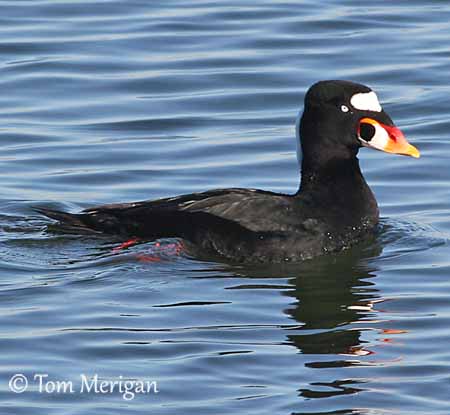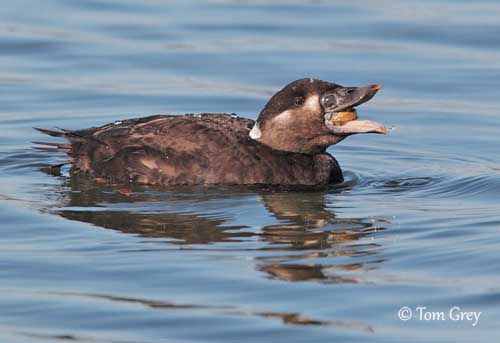
Fr: Macreuse à front blanc
All : Brillenente
Esp : Negrón Careto
Ital: Orco marino dagli occhiali
Nd: Brilzeeüend
Sd: Vitnackad svärta
Photographers:
Tom Grey
Tom Grey's Bird Pictures
Tom Merigan
Tom Merigan’s Photo Galleries
Texte de Nicole Bouglouan
Sources:
HANDBOOK OF THE BIRDS OF THE WORLD vol 1 by Josep del Hoyo-Andrew Elliot-Jordi Sargatal - Lynx Edicions - ISBN: 8487334105
GUIDE DES CANARDS, DES OIES ET DES CYGNES – de Steve Madge - Delachaux et Niestlé - ISBN: 2603013769
BirdLife International (BirdLife International)
Wikipedia, the free encyclopaedia
Surf Scoter
Melanitta perspicillata
Anseriforme Order – Anatidae family
BIOMETRICS:
Length: 46-55 cm
Weight: 900-1000 gr
DESCRIPTION:
This funny duck is often seen in groups all year round, but during winter, we can see large flocks on their wintering areas.
The Surf Scoter adult male has black plumage overall, except the greyish-white underparts below the breast.
Its black head is very distinctive. We can see a conspicuous white patch on the forehead, and another vertical white patch on nape and hindneck.
The large bill is orange with rounded white and black patches on the sides of the upper mandible. There is a conspicuous hump above the nostrils. The eyes are white. Legs and webbed feet are pinkish-red, with dusky webs.

The adult male lacks the white nape patch outside the breeding season.
The adult female is dark brown overall. We can see whitish, indistinct patches on cheeks and ear-coverts, and another pale patch on the nape. The crown is blackish. The bill is blackish. She has dark brown eyes.
Unlike the male, she has dark underparts.
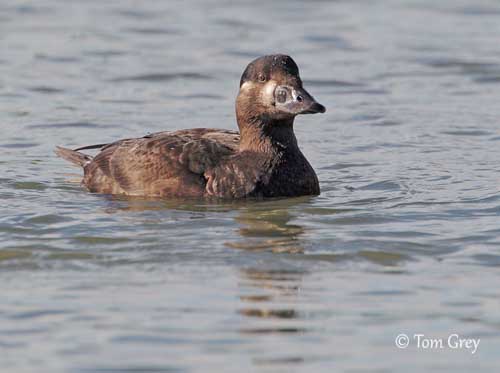
The juvenile is browner than female, with dark nape and white belly.
The immature male has less white on the head than the adult male.
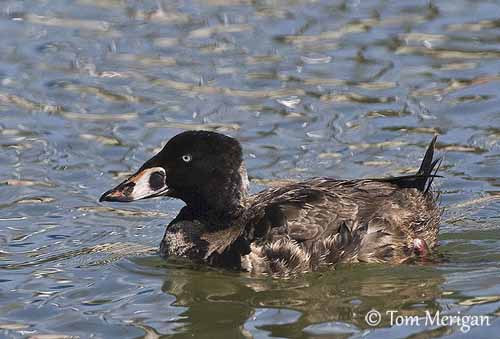
VOICE: SOUNDS BY XENO-CANTO
The Surf Scoter is usually silent except during the displays. The male gives low, throaty croaks and bubbling whistles and gurgles.
HABITAT:
The Surf Scoter breeds near lakes and rivers, on small bodies of freshwaters, usually in boreal forest or tundra.
During winter, it mostly frequents the coastal waters and can be seen in shallow waters in bays, estuaries and river mouths.
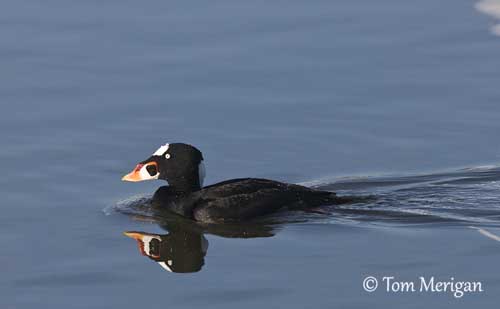
RANGE:
The Surf Scoter breeds in the northern parts of North America, from W Alaska, through C Canada to Labrador.
It winters on both Pacific and Atlantic coasts, to California and N Carolina.
Small populations also occur near the Great Lakes.
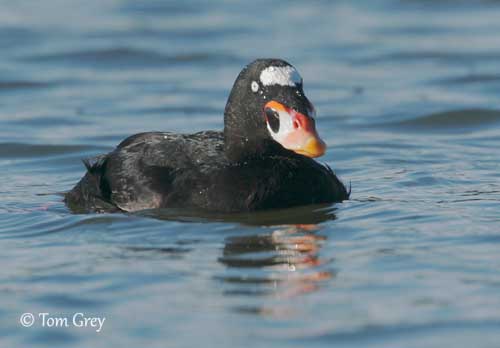
BEHAVIOUR:
The Surf Scoter feeds mainly on aquatic preys such as molluscs, but it also takes crustaceans, worms and echinoderms. During summer, it consumes aquatic insects and larvae, but also plant materials, seeds and green parts of aquatic vegetation.
It feeds by diving. It usually forages close to the shore among the breaking waves, and dives through the foaming wave crests. They often forage in flocks and in large numbers during winter.
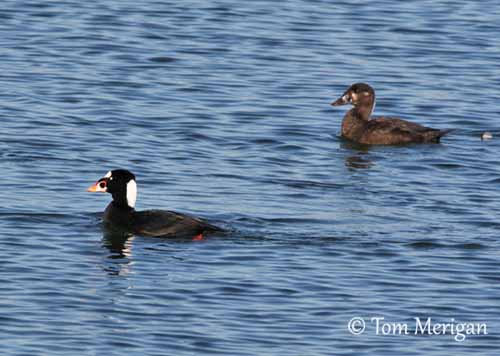
The pairs form in late winter and in spring. Several males display in water around one or two females, exposing the contrasted and bright pattern of head and bill. Some fights occur between males while competing for a female.
A new pair is formed each year, and usually broken after egg-laying. The males migrate for moulting in the coastal waters.
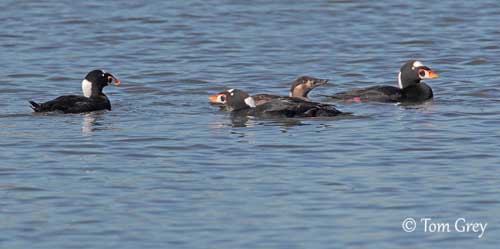
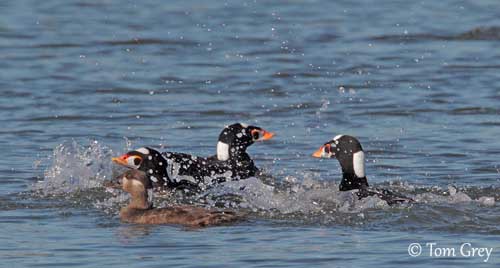
The Surf Scoter is migratory and winters at sea along both coasts of North America. They may occasionally wander further south.
This species is regularly seen in NW Europe, especially in Britain.
FLIGHT:
The Surf Scoter runs over water before to take off. It performs powerful flight. The wings produce a whistling noise while flying.
During migrations, they form an undulating line or a small compact group. They usually fly low from water, but much higher above the ground.
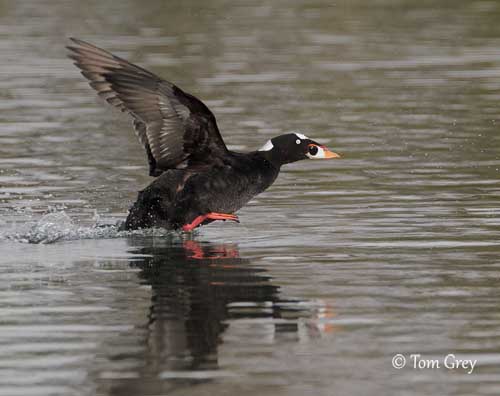
REPRODUCTION:
The breeding season starts in May-June.
The Surf Scoter nests in solitary pairs or in loose colonies. The nest is well concealed among the vegetation, on the ground, and often near shallow small lakes. It is a shallow depression lined with grass and some feathers.
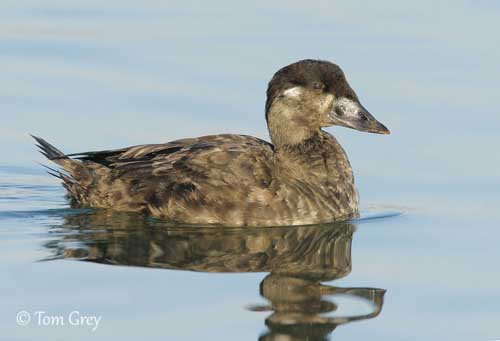
The female lays 5-9 eggs, and incubates during about one month. The chicks are covered with dark brown down on the upperparts and are pale grey below. They are precocial. The female and her brood may join other females in order to form a crèche. They sometimes abandon the young before they are able to fly, about 55 days after hatching.
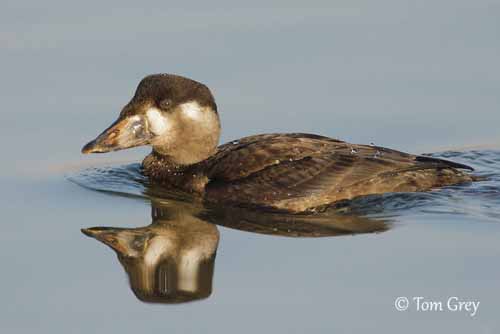
DIET:
The Surf Scoter feeds mainly on molluscs such as mussels and clams, but during the spring migration, they also depend on seasonally food sources.
On breeding areas near freshwaters, they feed on aquatic invertebrates such as insects and their larvae.
The chicks feed on insects, worms and spiders.
